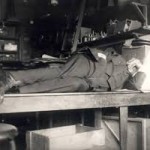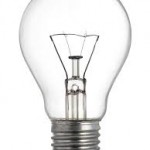 Simple steps you can take to help the future study of dreams.
Simple steps you can take to help the future study of dreams.
Sooner or later, people who keep a dream journal realize they are creating a document of more than just personal interest. They realize their journal is an amazing window into the lived experiences of a unique individual, offering potential insights for psychology, history, anthropology, and many other fields. And they wonder if it would be helpful, under the right conditions, to offer their journals to researchers for study and exploration.
It’s true, dream journals can be profoundly helpful to researchers who want to better understand the powers of the human mind. Some of the most important questions about the nature and meaning of dreams can only be answered by looking closely at the natural flow of dreaming during the course of a person’s life—that is, by looking at a well-tended dream journal.
This, I believe, is the most exciting horizon in the future study of dreams, and we can make huge progress in this direction by gathering high-quality journals from diverse people and exploring them with a variety of creative methods of analysis.
Not everyone who keeps a journal wants to go down this path, and that’s fine. The primary audience of a dream journal is the dreamer him or herself, and it really doesn’t have to expand any further than that.
But if you do have an interest in contributing your journal to the general study of dreams, there are a few simple steps you can take to prepare your journal, and yourself, for the process.
1. Record your dreams well.
The goal is to record your dreams in a way that works best for you, and that researchers can understand and study. Legible handwriting is a good start; many great projects begin with nothing more than a collection of handwritten journals. Audio recordings are another possibility. A file written in a digital word processing format is ideal, and most researchers will want to study a digital transcription of the dreams, in addition to the original recordings.
Make sure to include the date of the dream with each report. Some people date each dream from the day of the morning they wake up; I date my dreams from the day of the night I go to sleep. Either way is fine, just be clear and consistent.
At this point, English is the most widely used language for scholarly analysis. That will eventually change, but in the meantime, the ideal formatting of your journal would include the original language(s) of the dreams, along with an English translation if needed.
Each dream report should be just that, a report of a dream. It’s best if you include no associations, memories, or comments in the report. Just the dream, please. All of the further associations, etc., can be included in a separate file (see below).
The most helpful dream reports are written in as much detail as possible, especially about the settings, characters, thoughts, and feelings you experience within the dream. And, although it’s not necessary, I think it’s best to report the dream in the present tense—“I see my friend and we say hello,” rather than “I saw my friend and we said hello.”
2. Include additional material.
If you have the time and willingness to collect additional information about your dreams and their context in your life, that would of course be of great interest to anyone studying your journal. The key here is to be organized, and make it clear how the extra material is connected to the dream reports. Otherwise, a researcher could easily get overwhelmed by all the non-dream information, and lose track of the dreams themselves.
It’s helpful, both for the dreamer and for researchers, to know the following: 1) The location of where you were sleeping when you had the dream (the city is usually enough) and the level of familiarity (e.g. home vs. a hotel); 2) The length and quality of your sleep during the night of the dream; 3) The ages of the characters in the dream and their relations to you in waking life.
Drawings, sketches, and diagrams can be very effective for some people in describing their dreams.
Most researchers will be curious about your personal background, family upbringing, etc., so you might consider writing a brief account of your life, sharing whatever you think is most relevant for understanding your dreams.
3. Think about what you want.
Before contacting a researcher, make sure you’ve given some thought to the arrangements you would like to have in place. You should be aware that, sadly, there are very few institutional resources in the world devoted to the study of dreams. Most libraries, universities, and schools of psychology do not have the facilities or financial resources to accept donations of dream journals. However, there are individual scholars in various fields who have experience in working with participants in projects like this. Ideally they would be able to help you with expenses for formatting, translation, etc.
There is currently no commercial value to dream journal data. Most people are content with two non-financial benefits from the research process. First, they receive a greatly expanded vision of the meaningful patterns in their dreams. No researcher can ever predict where exactly the process will lead, but most people find intrinsic satisfaction in learning more about the deeper meanings of their dreams.
Second, they enjoy the feeling of tangibly helping the cause of dream research and broadening public awareness of dreaming. Once someone learns from personal experience about the transformative powers of dreaming, they naturally wonder how the world might change if more people became familiar with this potent inner source of creativity….
Very important: Think about how much confidentiality screening you want for your dreams. Some people do not mind allowing others to read their “raw” dream reports, while other people prefer to delete some passages and change the names of people and places, to preserve their privacy and the privacy of others. Once the real names in your dreams have been replaced with pseudonyms, it becomes difficult if not impossible to identify with certainty the real characters in the dreams.
And if there are a few dreams in the journal you simply don’t want anyone else to see, that’s okay, go ahead and remove them from what you share.
4. Make sure the arrangements are fair, ethical, and mutual.
Only get involved with researchers you trust. Make sure they understand that if at any point you want to end the research process, that’s it, you’re done, no questions asked.
Take a look at the ethics statement of the International Association for the Study of Dreams, and confirm that anyone you deal with is acting in accordance with these principles.
The researchers should report any significant findings to you, and they should consult with you on possible publications that reference your dreams. If you request, the researchers should treat you as a co-investigator, offering you regular updates and opportunities for your feedback and giving you as much public credit as you want to receive.
Your dreams, and your dream journal, are primarily for you. That’s a foundational principle, never to be forgotten. And, in addition to that, beyond the sphere of your personal life, your dreams have an amazing potential to teach many important lessons to other people, now and far into the future.
####
Note: this post first appeared in Psychology Today on November 2, 2018.
 Here are the recent posts I have written for Psychology Today, going back to the middle of last summer. Although each one is written as a stand-alone discussion of a special topic in dreaming, I now realize they also form a series of interrelated texts, like the chapters of a book I didn’t consciously know I was writing….
Here are the recent posts I have written for Psychology Today, going back to the middle of last summer. Although each one is written as a stand-alone discussion of a special topic in dreaming, I now realize they also form a series of interrelated texts, like the chapters of a book I didn’t consciously know I was writing….
 Simple steps you can take to help the future study of dreams.
Simple steps you can take to help the future study of dreams. The past one hundred years of human history have been dramatically transformed by the invention of several new technologies, each of which has impacted people’s lives in profound and complicated ways.
The past one hundred years of human history have been dramatically transformed by the invention of several new technologies, each of which has impacted people’s lives in profound and complicated ways.







